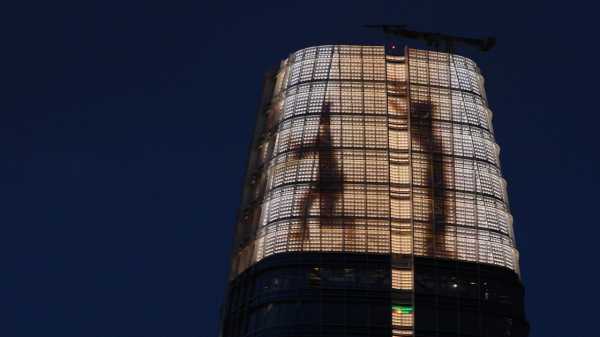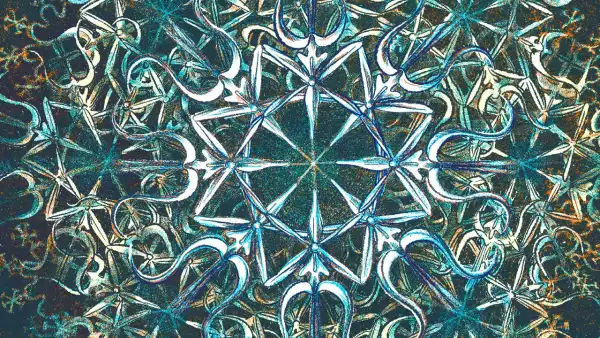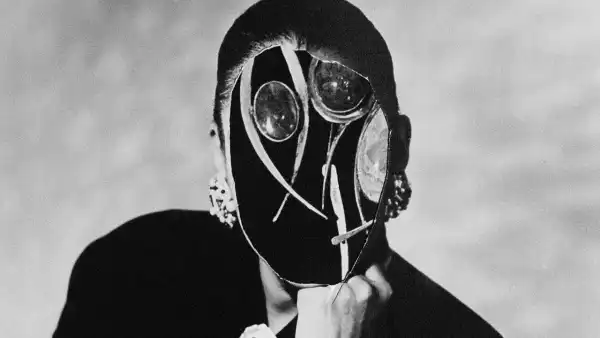
Tuesday was a soft evening in San Francisco: the fog intensified to something like a mist, and then a drizzle, and, up on the thirty-fifth floor of a sleek condo building on Tehama Street, guests in sharkskin suits and evening dresses studied the view with quiet resignation. They had gathered to mark the lighting of “Day for Night,” a brand-new L.E.D. work by the artist Jim Campbell. The piece crowns the Salesforce Tower, which, at a thousand and seventy feet, is now the tallest building, floor to roof, west of the Mississippi River. In theory, this makes “Day for Night,” which can reportedly be seen from twenty miles away and the upper atmosphere, the most visible public art work in the West. But, with the top of the tower vanishing into the fog, it became something else: the most visible public art work in the West that no one, at the moment of its appearance, could see.
“If I turn it on, it won’t make a difference, literally,” Campbell said with grim cheer. The thirty-fifth floor was dressed in the trappings of anonymous luxury: shell chairs, gas hearths, and an oyster sculpture on piled ice that radiated blue light, like a laptop keyboard. Campbell was in a distant corner, on his knees, pecking at a MacBook on a coffee table. He was wearing a puffy black Eddie Bauer jacket over a puffy charcoal-gray vest. His spectacles were pushed up on his forehead, nestled under a flop of gray hair. For some days, Campbell had been suffering from a chest cold, and, while speaking at a ribbon-cutting-type gathering that morning, he had been stricken with the stomach flu and evacuated mid-event. “I’m—under the weather,” he said faintly, clutching a tumbler of water and glancing nervously at the fog. When guests approached to wish him well, he murmured something about Murphy’s Law.
Salesforce Tower is named for its largest lessee, the cloud-computing company, which has taken thirty floors for its offices. The building resembles an enormous zucchini, and is mostly owned by Boston Properties, the real-estate investment trust. Since construction started, the tower has emerged as an icon of the new San Francisco—techie, ambitious, perhaps a little grandiose—and, like most major construction projects in town, it has been buffeted with wary controversy. (“Like President Trump on CNN, the tapered obelisk of metal and glass is impossible to avoid,” a San Francisco Chronicle columnist wrote as it was going up.) The display wrapping its vacant uppermost floors uses eleven thousand L.E.D. lights that can be programmed into various displays: a kind of changing billboard made not for the world of the streets but for the skyline.
Campbell was a hardware engineer who began making light and screen art, becoming known especially for what he calls “low resolution” work: representational images pixelated to the boundary of abstraction, often by using L.E.D.s. In time, his sideline overtook his day job. (Today, Campbell has work in the collections of most major museums.) A San Francisco planning code requires a public-art component for new buildings, and, when Campbell offered a proposal, the city’s Planning Commission took him on. “I presume I’m the only one who presented an image as my proposal,” Campbell said. His idea was to dress the peak of the building with thousands of L.E.D.s turned not outward but inward, so as to be reflected off the tower’s surface, creating a smooth, soft glow. The images projected on the screen are collected from cameras located around San Francisco, capturing daytime footage to be played back on the tower the same night.
“Whatever I’m shooting has to move—otherwise you can’t tell what it is,” Campbell said. “The ocean always moves.” Some of the footage is drawn from San Francisco’s shoreline. Other bits are from the streets. “The sky does not always move, but, because it’s up into the sky, I’m very interested in making the sky a major part of the work. The notion is to take the full day of the sky and collapse it to a half hour and to play that at sunset.” The work had to be conceived in an unorthodox fashion, he said, because it projects such a distance. “Public Art 101 is that you look at the environment, the community, and the history of where the work is,” he explained. “Meaningless here, because you don’t see it from the environment, the history, and the context of that location.” Instead, “Day for Night” can be seen equally from grassy hills across town, from living-room windows, from between the cables on the Golden Gate Bridge. “The context is the city,” Campbell said.
As the fog continued swarming at elevator height, Campbell crouched in his corner, focussing hard on the laptop. Behind him was a pitch-black pool table and a flat-screen TV tuned, mute, to the Warriors-Rockets game. Campbell toggled among a patchwork of command-prompt terminals open, surrounding two windows that displayed the images being sent to the tower: humanoid forms moving against a warm beige background.
“Very slow connection tonight—I wonder if that’s the fog,” he murmured, squinting at the draggy command cursor. His laptop background was a black-and-white photo of the clock in Grand Central Terminal. He typed a string of commands to load a new image—an orb moving from one side of the window to the other.
“This is my spotlight spinning around the top of the building,” he explained, rising. He stuck his head out a door leading to a terrace facing the tower, to check whether the light was cutting through the weather. Nothing. Back at his computer, he began calling up new image programs, making small adjustments. In the art work’s lasting version, images will load automatically.
“I’m trying to pull up some programs that have very solid, basic blocks of color,” he said, back at his computer. “They might show up better.”
Campbell’s associate, Russell Zeidner, brought him a dark-gray tuffet. Campbell sat on it. A waiter offered him a meatball. Campbell looked at it in horror.
After a while, Zeidner rushed back from inside. “Right now, you can see the blue,” he reported.
“I didn’t change anything, Russell, so that’s the clouds,” Campbell said.
Fireworks were scheduled to fire off the top of the tower at the moment of official illumination. As the party grew, Campbell plugged his laptop into a larger flat monitor. Everything was bigger now. A guest came from the terrace. “Jim, it worked,” she announced. “At one point.”
“Thank you,” Campbell said.
“Is that what we were seeing?”
“You were actually just seeing a straight blue,” Campbell said.
“It was beautiful.”
“O.K.,” Campbell replied.
“The wind’s picking up, Jim! It’s blowing that way!” Bob Pester, the executive vice-president of Boston Properties, said, merrily, halfway out the patio door. “Jim! Look on the brighter side. We’ve got every night for the rest of our lives.”
The party was beginning to warm up. “You can move markets with those lips!” a man exclaimed to a woman near the doors, as guests spilled out onto the terrace. Someone handed Campbell a wireless microphone. “Hello,” he murmured into it, suspiciously. He put it down.
“We’re getting really close,” a busy-looking man with a cell phone said, squatting on a chair next to Campbell’s tuffet. He gazed at his phone and began a countdown. “Ten. Nine. Eight. Seven.” Campbell poised his hands over the laptop’s keyboard. “Three. Two. One. Go.”
There was a long silence from the people on the terrace. The fog was thick. At last, someone exclaimed, “Woo-hoo!,” and a volley of cheers followed. The fog began to shift in color from the fireworks. “Oh!” the crowd exclaimed. “Woo!”
“The fireworks have a lot more power than the art work, I guess,” Campbell said. “Or wattage.” But he was smiling all the same, mouth agape. He’d been working on “Day for Night” for four years.
“Jim!” someone called excitedly across the terrace as the explosions intensified. Campbell gave an audible sigh of pleasure. “Jim, it lit up!”
Sourse: newyorker.com






